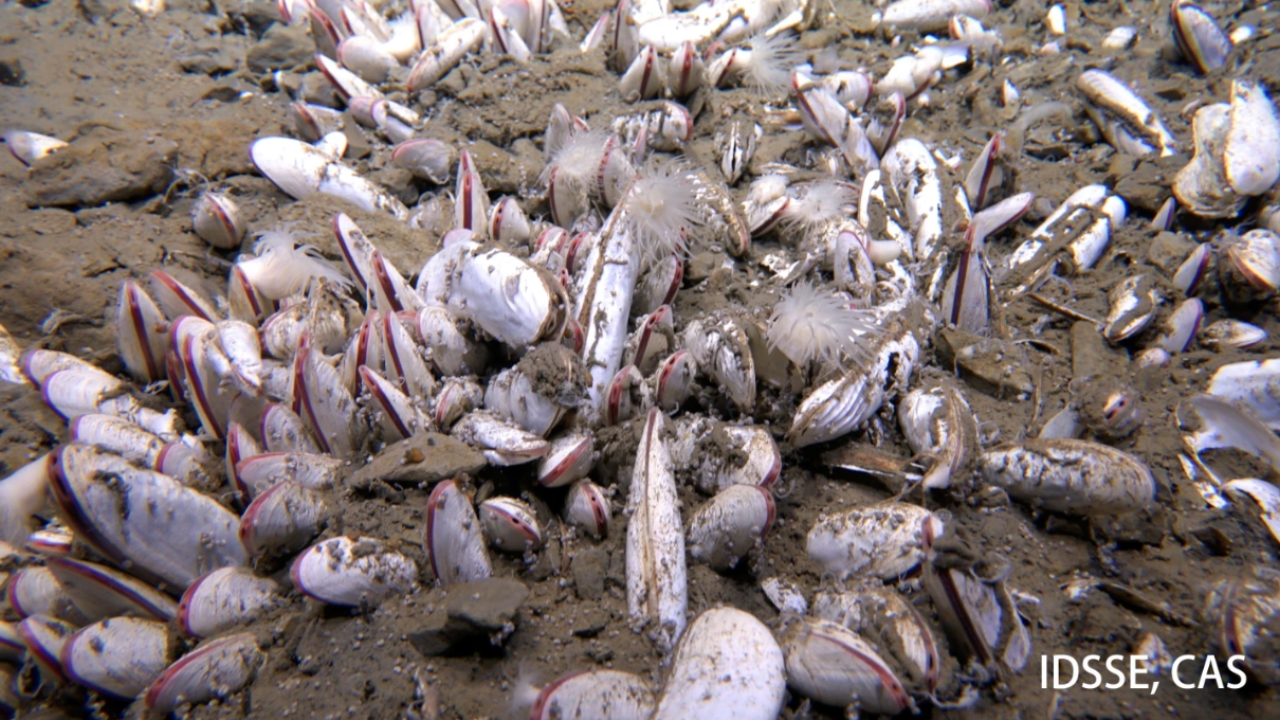
©(Institute of Deep-sea Science and Engineering, Chinese Academy of Sciences via AP)
Vocabulary:
I will read the words, meanings, and sample sentences. Then, repeat after me.
- intense /in-TENS/
- submersible /suhb-MUR-suh-buhl/
- inaccessible /in-uhk-SES-uh-buhl/
- microbe /MAHY-krohb/
- assumption /uh-SUHMP-shuhn/
[adjective] – very strong or extreme in degree
The desert is known for its intense heat during the summer months.
[noun] – a small vehicle or device designed to operate underwater
The scientists used a submersible to examine coral reefs in the Atlantic Ocean.
[adjective] – difficult or impossible to reach or enter
The mountain village becomes inaccessible during heavy snow.
[noun] – a very small living thing, especially one that causes disease, that can only be seen with a microscope
Some microbes in yogurt help improve digestion.
[noun] – a belief or idea accepted as true without proof
His assumption about the results delayed the correct diagnosis.
Article reading:
Please read the whole article. Then, I will check your pronunciation and intonation.
A scientific study published in the journal Nature has verified the presence of large marine organisms at extreme depths of the Pacific Ocean. Researchers explored the Kuril–Kamchatka and Aleutian trenches, located in the northwestern Pacific, where they identified tubeworms and mollusks living more than 31,000 feet (9.5 kilometers) below the surface. These areas are known for intense pressure, freezing temperatures, and a complete lack of sunlight. Research teams from the Chinese and Russian Academies of Sciences used an advanced submersible to explore these regions, which were previously considered nearly inaccessible. The discovery provides strong support for earlier theories that larger life forms may exist in the deepest parts of the ocean.
According to scientists, these deep-sea organisms likely depend on a process known as chemosynthesis. In this process, microbes transform carbon compounds, which have slowly collected in the trenches over time, into energy-rich chemicals. These substances either feed larger organisms directly or are exchanged through symbiotic relationships. Experts stated that this kind of biological adaptation challenges earlier assumptions about the limits of life under extreme conditions. Marine biologist Julie Huber explained that the newly discovered diversity at such depths had not been visible before due to limited access. The findings are expected to lead to further studies of the biochemical systems that enable life in these harsh environments. Researchers also suggested that this evidence may guide future exploration of other uncharted regions of the deep ocean, where similar ecosystems may be waiting to be discovered.
According to scientists, these deep-sea organisms likely depend on a process known as chemosynthesis. In this process, microbes transform carbon compounds, which have slowly collected in the trenches over time, into energy-rich chemicals. These substances either feed larger organisms directly or are exchanged through symbiotic relationships. Experts stated that this kind of biological adaptation challenges earlier assumptions about the limits of life under extreme conditions. Marine biologist Julie Huber explained that the newly discovered diversity at such depths had not been visible before due to limited access. The findings are expected to lead to further studies of the biochemical systems that enable life in these harsh environments. Researchers also suggested that this evidence may guide future exploration of other uncharted regions of the deep ocean, where similar ecosystems may be waiting to be discovered.
Discussion Questions:
I will read each question. Then, please answer them.
- Have you ever seen sea animals in an aquarium or museum? If so, what did you learn or enjoy the most? If not, would you like to visit one? Why or why not?
- Have you watched a documentary or movie about the deep sea? If yes, what surprised you the most? If not, what would you like to learn about life in the deep ocean?
- Do you agree that exploring deep oceans can help scientists learn more about life on Earth?
- Why do you think scientists continue to explore very deep parts of the ocean?
- What are some challenges scientists might face when studying life at extreme depths?
Summarization
Please summarize the whole article using your own words and expressions. You will have one minute to prepare before you answer.
Describe:
Please explain the definition of each word listed below based on your understanding. You can provide example sentences if needed.
- organism
- temperature
- biologist
- environment
- ecosystem